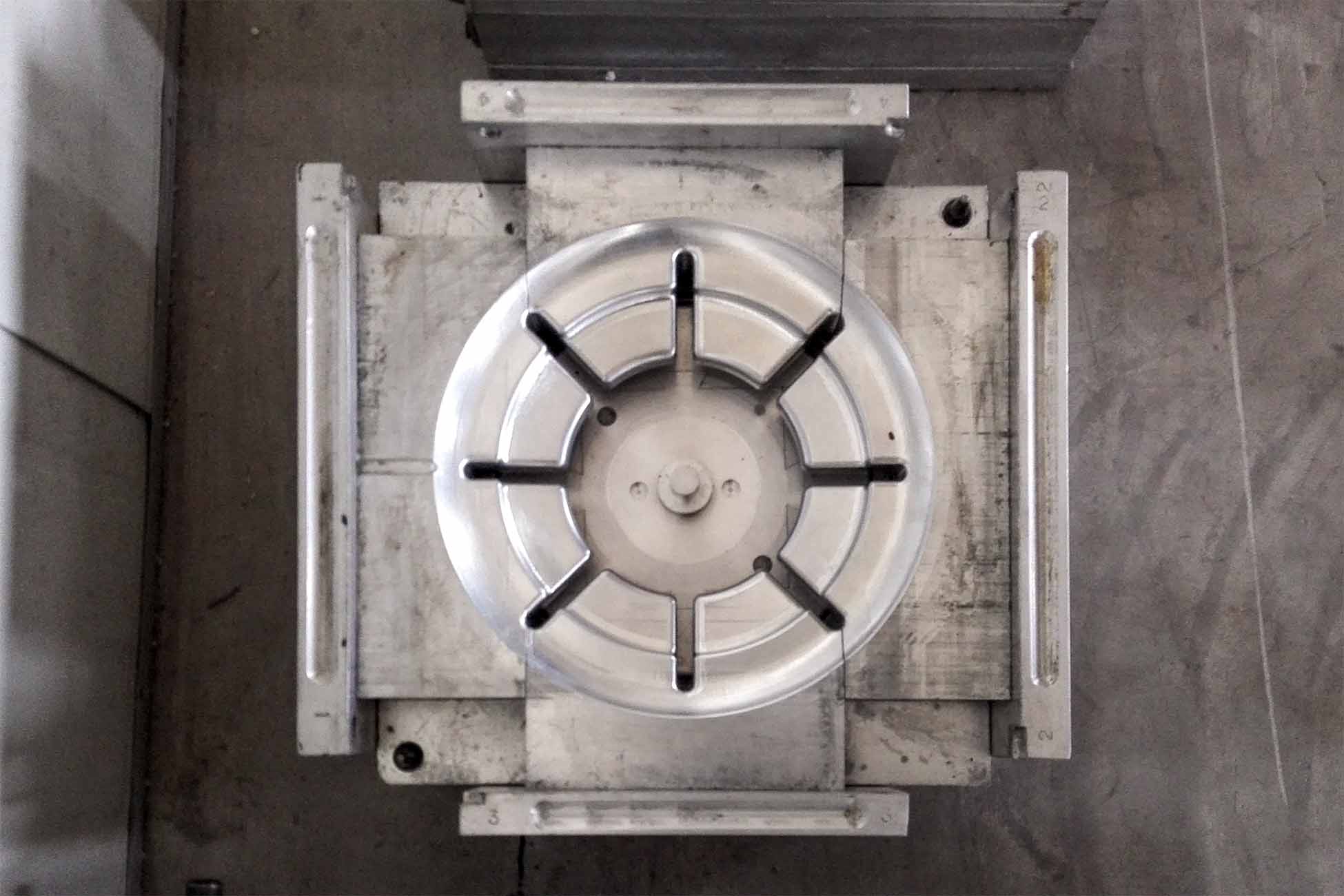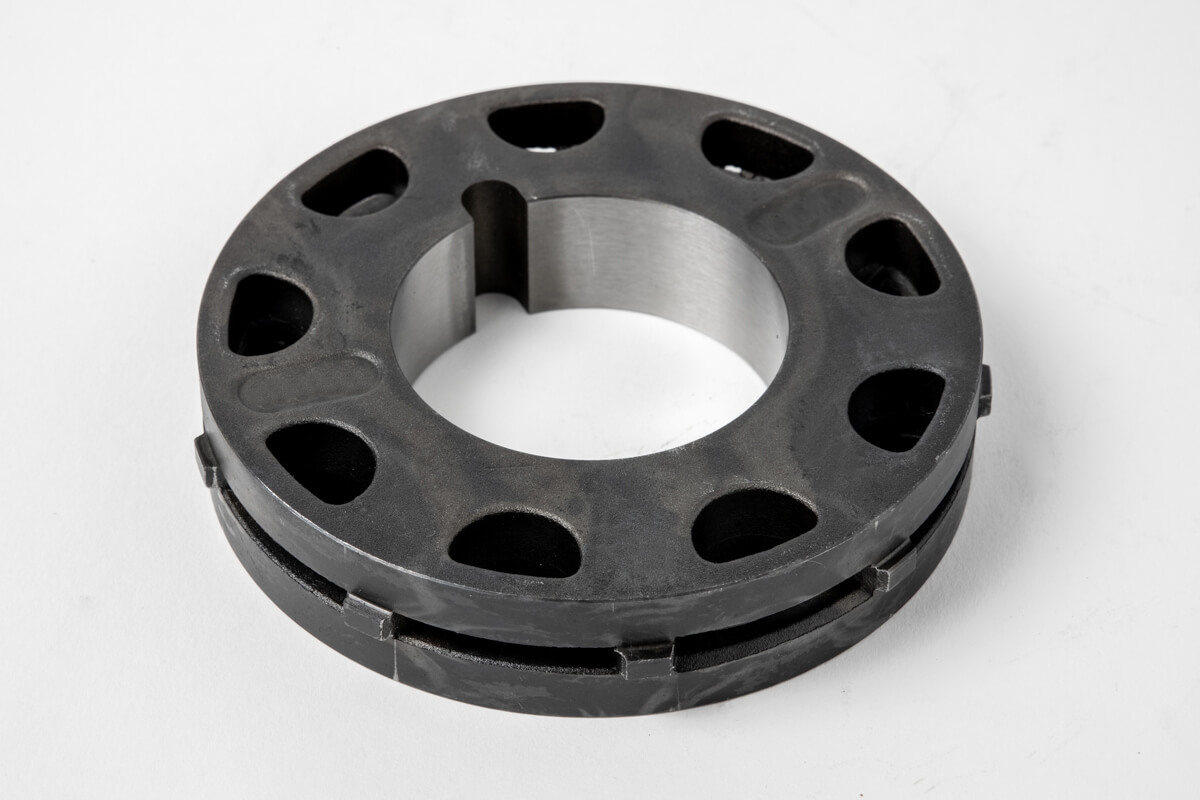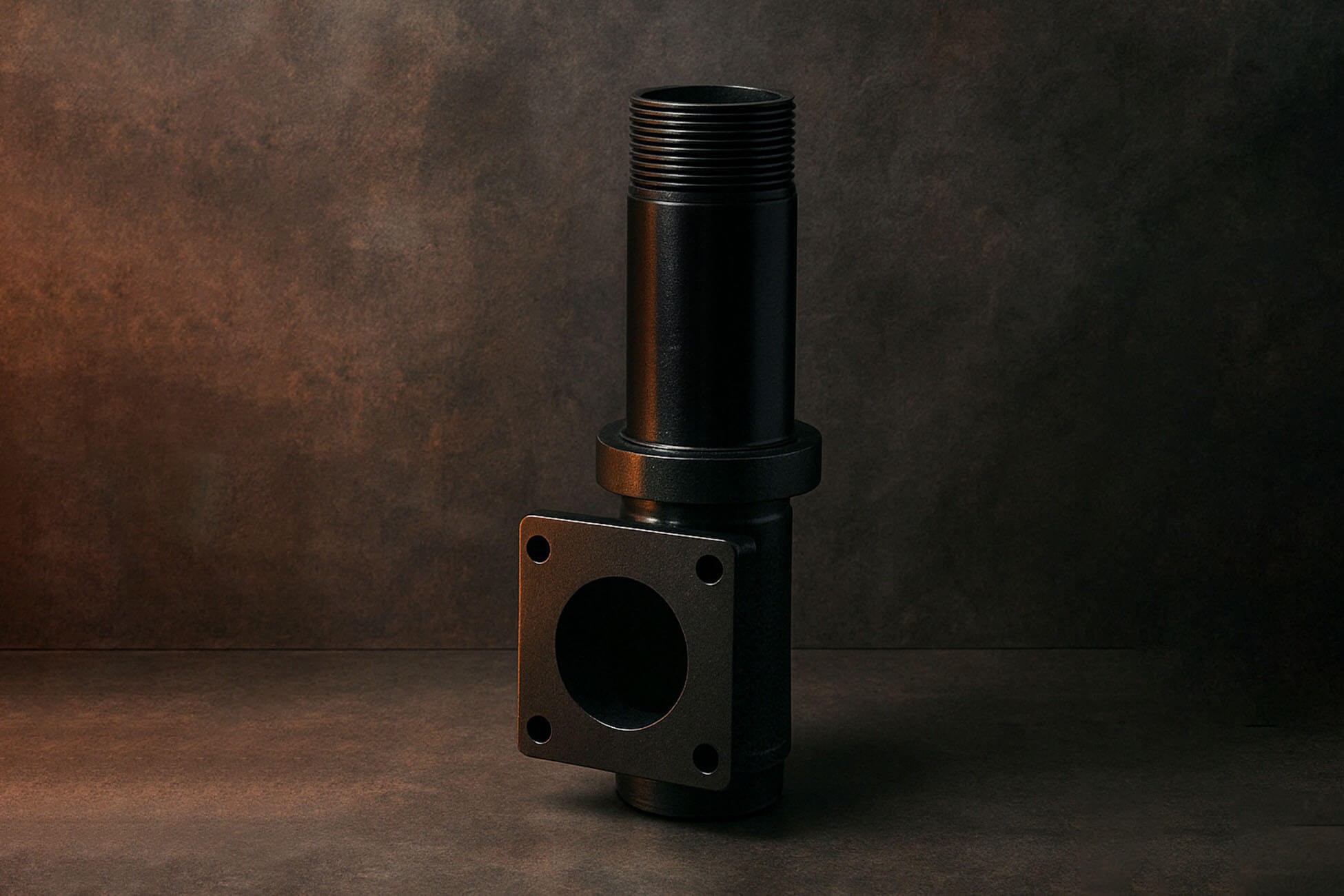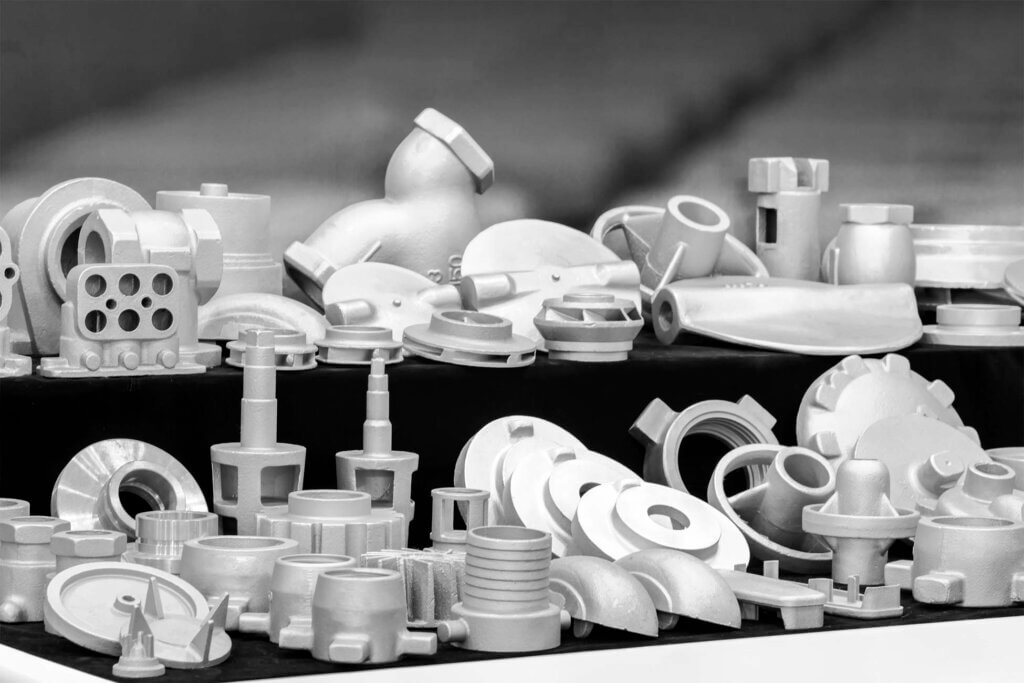

Investment casting, also known as lost wax casting, is a 5,000-year-old metalworking technique that blends ancient craftsmanship with modern precision. From intricate jewelry to high-performance industrial components, this versatile process remains a cornerstone of advanced manufacturing across diverse industries.
Now, let’s break down the investment casting process into eight essential steps that highlight how this ancient technique works in modern manufacturing.
Key Takeaways
- How it Works: Investment casting starts with a wax pattern, builds a ceramic mold, and ends with a precision metal part—ideal for complex designs.
- Modern vs. Traditional: Discover how 3D printing, automation, and high-performance alloys are reshaping this 5,000-year-old metalworking method.
- Precision Benefits: Understand why investment casting is ideal for tight tolerances, smooth finishes, and complex geometries—often with minimal secondary machining.
- Real-World Applications: See how industries like aerospace, agriculture, and medical, rely on investment casting for both small and large parts.
- Quality Assurance: Explore how non-destructive testing (NDT) methods like radiography and dye penetrant testing ensure safety and structural integrity.
- Future Innovations: Get a glimpse into how AI, robotics, and new materials are driving efficiency, defect detection, and predictive maintenance in casting.
The Investment Casting Process in 8 Steps
As we’ve learned, investment casting is a process that has been used for thousands of years. “Investment” refers to the mold being filled or invested with metal. The first use of investment casting was to produce decorations, religious figures, utensils, weapons, household goods, and jewelry. Today, this process is used to make intricate parts for many industries.
Here are the steps:
- Create the pattern
- The pattern is what creates the shape of the finished product. The pattern is made out of wax. For short runs, we can directly machine the wax pattern, but in most cases, we use a metal die based on a 3D CAD model.
- Build the tree
- We attach several wax patterns to a wax rod to create a tree structure. This enables us to cast many parts at once, which lowers the cost per part.
- Make the shell
- We dip the tree into a wet, clay-like material—a ceramic slurry. We let it dry. This happens multiple times so that the tree has a strong outer layer.
- Remove the wax
- The shell is heated upside down. The wax runs out (this is why it’s sometimes called lost wax casting). Then the shell goes into a high-temperature furnace to burn off any remaining wax and strengthen the shell.
- Cast the metal
- Molten metal is poured into the mold. We use the tree we built in the second step to define where the metal goes. Now a metal part exists where each pattern used to be.
- Remove the shell
- The ceramic shell is broken away, leaving the tree structure—now only of metal—intact.
- Finish the parts
- Parts are carefully cut from the metal tree structure. If needed, we can do some secondary machining to get the desired tolerances and surface finish.
- Inspect the parts
- Dimensional inspection and non-destructive testing (NDT) are done to make sure that the investment castings meet all the required specifications.
Wax Patterns
A master mold can be created in several ways, including 3D printing, machining from steel, or carving from wood. After the mold is made, wax is injected into it. The wax pattern will cool and create a replica of the original pattern.
The wax pattern is covered with a refractory ceramic material (a.k.a. the investment material). The ceramic material hardens and becomes a ceramic shell or ceramic mold. The wax is then heated to a high temperature, so the wax melts and drains from the ceramic shell. Common refractory materials include silica, zircon, aluminum silicates, and aluminum.
Molten Metal

Pictured above: An investment casting mold for the wax pattern.
After the molten metal is poured into the mold, the metal hardens, and the investment material is broken, revealing the finished part.
The wax pattern and ceramic mold are destroyed during the manufacturing process. A new wax pattern must be made from the master pattern to produce each new ceramic mold. Then, the process starts over for every part. The dimensional accuracy of each casting means fewer post-casting machining operations are needed.
Now that we’ve explored the step-by-step process, let’s examine how investment casting has evolved, from its traditional roots to modern advancements.
Investment Casting Methods: Traditional vs. Modern Approaches
Investment casting was first used to create jewelry and tools and has evolved over time to seamlessly blend art and science, achieving intricate designs and precise components.
While traditional investment casting used hand carved beeswax as the pattern material, modern approaches include advancements like 3D printing and rapid prototyping with various materials. Every aspect of the modern investment casting process has benefited from modern technology. As a result, modern parts manufactured with the investment casting method are more precise, consistent, and cost-effective.
Today, a modern investment casting company like The Federal Group, can achieve tighter tolerances and complex geometries using high quality waxes, foams, and plastics. Advanced foundries increasingly use robots and automation to lower costs, speed up the manufacturing process, and ensure greater detail in the final product. Even further, high performance alloys and sustainable practices have enhanced the capabilities of investment casting.
While modern advancements have greatly improved investment casting, it’s still important to consider both the advantages and potential limitations when choosing this method.
Investment Casting Advantages & Constraints
While investment casting is useful for creating complex parts, it also has a few constraints.
Investment Casting Advantages Include:
- High dimensional accuracy
- Smooth surface finish
- Flash-free parting lines
- Compatibility with most metals
- Ability to produce intricate parts
Our investment casting foundry has the most modern equipment, including a quality gating system plus robotic arms that help reduce many operator-error casting defects. This process also results in a smoother finish. The ability to trim and smooth the wax patterns prior to building the tree and coating it with the ceramic mold (a.k.a. ceramic shell) eliminates flashing or parting lines in the finished product.
These benefits eliminate or reduce the need for extensive secondary surface finishing to the investment castings, therefore production timelines become shorter.
This technology is popular for products that require greater precision.
Investment Casting Constraints Include:
- A longer time to produce a wax pattern and let the ceramic shells dry.
- Occasionally more expensive (but may be offset by the reduced need for secondary operations).
- Time to make cores if you need them.
Making the dies and molds can add time to the production process. From making new wax patterns to getting the final product takes about seven days on average.
Creating the ceramic mold is the most time-consuming part of the process. It also takes longer to change the design if it is necessary. This is because new molds may have to be created.
Investment casting is a good way to make a complex component. This process is used for parts that need to be very precise. However, adding a core or cavity to the part increases the project’s complexity.
Given these advantages, it’s no surprise that investment casting is widely used in numerous industries requiring precision and complex parts
Investment Casting Industries And Products
Investment castings are used in many products serving numerous industries. Some of these products and industries are listed below.
The investment casting process is versatile and can be used to create a wide variety of shapes and sizes. It is frequently used to fabricate small parts for cooling systems, firearms, and aerospace equipment as well as large parts such as boat anchors, forklift counterweights, and heavy agricultural machinery. The process is also popular in the automotive industry, where it is used to create many high-precision components.

Above: A chain sprocket manufactured by The Federal Group via investment casting.
Products Manufactured
- Armored vehicle accessories
- Boat anchors
- Boat cleats
- Boat steering wheels
- Chain links
- Chain sprockets
- Conveyor systems
- Cooling systems
- Couplings
- Engine blocks
- Exercise / fitness equipment
- Firearms
- Fire hydrant components
- Firefighting equipment
- Gearbox housings
- Gun turrets
- Impellers
- Motor housings
- Motor mounts
- Motorcycle brackets
- Plow tips
- Plumbing nozzles
- Pulleys
- Pump housings
- Street lamp bases and poles
- Snow plow components
- Turbo chargers
Industries Served
- Aerospace
- Agriculture
- Automotive
- Energy
- Electric Vehicle
- Food Processing
- Medical
- Military
- Mining
- Nautical
- Paper Manufacturing
- Water Desalination
Quality Control and Inspection in Investment Casting

Given the complexity and precision required in investment casting, ensuring the highest quality in the final product is critical. This is where modern quality control and inspection methods come into play, safeguarding the integrity of each cast component.
Quality control and inspection is an integral part of the investment mold casting process. Manufacturers and metalworkers meet high standards of precision using modern inspection and testing methods. Learn more about the role of non-destructive testing and what makes investment casting products different from other casting methods.
Ensuring High Standards: The Role of Non-Destructive Testing (NDT)
Non-destructive testing (NDT) includes various techniques to evaluate the integrity of cast metal components and determine the quality of finishing without causing any damage to the component. For example, radiography is commonly used for detecting internal defects, such as voids or inclusions deep within the material, while dye penetrant testing is more appropriate for surface defects, allowing technicians to find cracks or other imperfections on the external part of the cast.
The ability to detect even the smallest internal and surface defects is especially important for components manufactured for critical applications, such as those in the medical field, where precision is vital for health outcomes.
Various NDT methods preserve components while allowing for detection of flaws. Methods used include ultrasonic testing, radiography, and dye penetrant testing. These NDT techniques identify cracks, voids, and inconsistencies throughout the casting process, reducing the risk of faulty parts and enhancing the overall investment casting process.
Other methods, including visual inspections, magnetic particle testing, and eddy current testing, contribute to the safety and reliability of components. Using multiple NDT methods to inspect the casting without destroying it is a critical step in manufacturing, essential for maintaining high safety and performance standards across various industries.
Dimensional Accuracy and Surface Finish: What Sets Investment Casting Apart?
Modern investment casting offers superior accuracy compared to other methods like sand casting and custom die casting, making it ideal for intricate, high-precision parts. Although the investment casting mold creation process makes it unsuitable for large parts, it is ideal for producing small components with intricate details and smooth finishes. Investment casting can achieve tight tolerances in the range of 0.005 inches, which is significantly more precise than what can be achieved with sand mold castings.
To achieve exceptional precision, investment casting begins with a highly accurate pattern, often created using modern methods like 3D printing and CNC machining. While the accuracy of investment casting starts with a precise pattern, the precision must be carried throughout the entire process. Dimensional accuracy is achieved by meticulously controlling every stage of the process, from mold making to pouring the molten metal.
In addition, investment casting achieves exceptionally smooth finishes, unlike sand casting and other metal manufacturing methods. The smooth ceramic molds used in investment casting result in a fine finish that often eliminates the need for further machining. This feature makes investment casting the preferred method for high-performance parts.
Future of Investment Casting: Trends and Innovations
Modern metal manufacturing continues to benefit from technological trends and innovations, and investment casting is poised to benefit from advancements in artificial intelligence and robotics. Developments in investment casting materials and techniques, such as special alloys or pattern materials, will continue to enhance the capabilities of investment casting.
The Role of Automation and AI in Investment Casting
Like most industries, metal manufacturing is benefiting from automation and artificial intelligence. Robotics play an important role in making investment casting more efficient and precise by streamlining various stages of the process. Automation reduces production time, minimizes errors, and enhances the overall efficiency of investment casting.
AI-Driven Quality Control and Predictive Maintenance
Automated systems and robots are more accurate than people, able to identify inconsistencies and imperfections in investment casting long before the naked eye could detect them. By detecting imperfections earlier, robots reduce waste and produce higher quality metal castings. Robots can also operate under conditions that would be hazardous to humans, such as extreme temperatures.
Furthermore, AI has also begun to revolutionize the process by introducing machine learning algorithms that assist in defect pattern recognition. These AI-driven systems analyze vast amounts of casting data, allowing them to detect minute defects or inconsistencies in real-time, long before they become visible to the human eye.
This proactive detection minimizes waste and significantly improves overall product quality. Additionally, predictive maintenance is another critical AI application in investment casting. By continuously monitoring casting machinery, AI can predict potential failures or downtime before they happen, ensuring a more streamlined and efficient production process.
The Future of Investment Casting
As the robotics field continues to advance, the safety and precision of investment casting are enhanced. Automated systems are used in assembling patterns, building investment casting shells, and pouring molten metals. Robotic systems are also used during the demolding stage and many are equipped with cameras and defect detection systems to ensure components meet the highest quality standards.
As technology continues to evolve, investment casting will remain a critical process, marrying ancient techniques with cutting-edge innovation.
Potential Developments in Materials and Techniques
As history has shown, developments in various materials and techniques used in investment casting will continue to enhance the precision and quality of components. From pattern creation using 3D printing with plastics and advanced polymers to the integration of high performance alloys, the potential developments in investment casting are promising.
Rapid prototyping with 3D printing is still a relatively new development, allowing patterns with complex shapes to be created faster. In the future, rapid prototyping could lead to opening doorways for new materials to be used in precision casting, reducing costs and increasing production efficiency.
It’s difficult to imagine a world without stainless steel, but investment casting was developed thousands of years before its invention. The first metals used in investment casting included elements like gold and copper and alloys like bronze and pewter. Just in the last century, innovations in aluminum, cobalt, and magnesium alloys transformed various industries with components designed to handle extreme conditions.
Should You Choose Investment Casting?
At The Federal Group, our extensive expertise in investment casting ensures that your components are crafted with the highest precision and quality. Whether you’re looking for intricate parts or high-performance components, we’re here to guide you through the process and meet your exact specifications.
Contact us today for a consultation or quote to find out how our investment casting company can meet your needs.
Sandor Holzer
Chief Operating Officer
As the COO of The Federal Group, Sandor manages operational excellence and strategic initiatives, leveraging his extensive experience in supply chain optimization and process improvement. With a relentless focus on efficiency and quality, he drives organizational growth and fosters a culture of innovation.
Up Next


